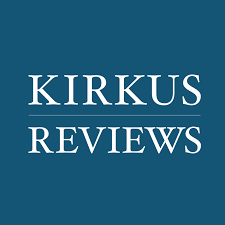Bag O'Tales: A Source Book for Story-Tellers

Author:
Effie Power
Illustrator:
Corydon Bell
Publication:
1934 by E. P. Dutton & Co., Inc.
Genre:
Adventure, Anthology, Fables, Fairy Tales, Fantasy, Fiction, Folk Tales, Historic Tales and Legends, Humor, Mythology, Performing Arts, World Cultures
Pages:
340
Current state:
This book has been evaluated and information added. It has not been read and content considerations may not be complete.
Book Guide
Search for this book used on:
For years a leading consultant in the field of children's literature, Effie Power collected in this book 63 stories that have come to be considered a classic compilation of the best-known, best-liked children's material. From all over the world, from times ancient and modern, from all cultural levels, these stories have been read aloud or told aloud to children by generations of fathers, mothers, aunts, uncles, teachers, and children's librarians. Part of man's cultural heritage, the tales, ballads, epics, myths, etc. introduce children to the great varieties of the world's literature in a form that insures maximum enjoyment.
The stories have been arranged in sections corresponding to different geographic areas, age levels, or story types; each is prefaced by an introduction giving a brief description of the general nature of the stories in that section and the best way to tell them. Each is followed by a bibliography listing further sources, both original and adapted. Sections include: Stories for Little Children (Old Mother Hubbard, Chicken-Licken, the Three Little Pigs, Wee Robin's Yule Song, The Princess on the Pea, etc.), Folk Tales and Fables (The Elves and the Shoemaker, The Squire's Bride, Sleeping Beauty, Phoebus and Boreas, Cinderella, The Hare and the Tortoise, etc.), Greek Myths and Epics (Ceres and Prosperine, How Perseus Slew the Gorgon, How Odysseus met the Princess Nausicaa, the Cyclops, etc.), Northern Myths, Sagas and Epic of Beowulf (The Apples of Youth, How Thor's Hammer was Lost and Found, How Beowulf came to Daneland, etc.), Tales of Chivalry (How Arthur proved his Kingship, Roland's Youth, etc.), Irish Hero Tales (Cuchulain's Wooing), Persian Hero Tales (Zal, the White-Haired), Ballads (The Silver Arrow, Forester Etin, Get Up and Bar the Door, etc.), and Fanciful Stories and Family Books (Ole Shut-Eye, The Lepracaun, Christian and Hopeful in Doubting Castle, etc.).
From the book
To view an example page please sign in.
Resource Guide
Episode 70: Why Read Fairy Tales?
Released in 2020 by The Literary Life
Available formats: Streaming Audio
Length: 1 hr. 29 min.
View on the The Literary Life site
"Angelina Stanford and Cindy Rollins tackle the topic of fairy stories, discussing the what, why and how of reading them. Angelina shares the distinctive characteristics of fairy stories in contrast to other types of stories, such as myths. They deal with the question of whether fairy tales are 'escapist', the influence of the Grimm brothers scholarly work on interpreting fairy stories, and allowing the story to unveil its deeper truths without forcing meaning onto it.
Angelina gives an illustration of how to see the gospel messages in fairy tales by talking us through the story of Sleeping Beauty. She refutes the ideas that fairy tales are about human romance or are misogynistic. She also highlights some of the Enlightenment and Puritan responses to fairy tales that still linger with us today. Cindy and Angelina also discuss some common concerns such as the magical, weird, or scary aspects of fairy tales. Angelina also makes a distinction between folk tales, literary fairy tales, and cautionary tales."
Find This Book
Search for this book used on:





